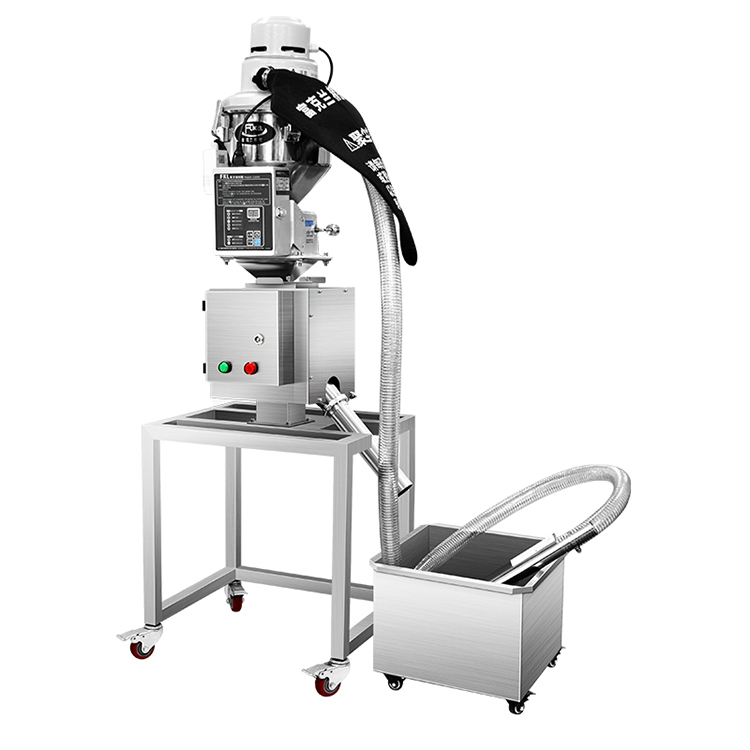Metal separator is an electronic instrument, the application of electromagnetic induction principle to detect metal, long service life, failure only need to replace the corresponding components can continue to use. At present, the most common metal detection equipment on the market is a channel-type metal separator, the detector channel is square, generally equipped with a conveyor belt mechanism, with an automatic culling device, or to provide an alarm signal. When the items on the conveyor belt pass through the detector, once there is metal, it is automatically removed or stopped. Mainly for online testing of finished products and semi-finished products, provide final inspection before shipment. For example: bagged materials, boxed products, etc.
General metal separators can not fully monitor the entire production process of fluid products, such as meat sauce of ham sausage, gum glue, oral liquid, etc., real-time online removal of metal impurities to ensure that the product is safely transported to the next process. Under normal circumstances, these products are packaged in metal, and can not be detected by metal separators after becoming finished products. In addition, liquid or viscous items are detected before canning or packaging, which can effectively improve the detection accuracy.
Whether it is the food, pharmaceutical and rubber industries, or the textile, paper, ore and recycling industries, we can provide metal separators or separators to meet their requirements. In addition to the above three types of channel type, fall type and pipe type, there are pipe type and plate type suitable for air supply vacuum transportation.
It is usually used to detect products with relatively thin thickness but large width and length, such as textile fabrics and extruded sheets. Its primary purpose is to protect downstream equipment, such as cutting tools, calender systems, etc. At the same time, improve product quality.
Metal separators and separators are generally not affected by the mounting direction and can be installed horizontally, vertically and diagonally, almost anywhere in the production process.
The accuracy and reliability of the metal separator depends on the stability of the electromagnetic transmitter frequency, which is generally used from 80 to 800 kHz. The lower the operating frequency, the better the iron detection performance; The higher the operating frequency, the better the detection performance of high carbon steel. The sensitivity of the detector decreases with the increase of the detection range, and the size of the induced signal depends on the size of the metal particle and the conductivity.
Due to the current pulsation and current filtering, the metal separator has a certain limit on the transmission speed of the detected items. If the transmission speed exceeds a reasonable range, the sensitivity of the detector will decrease.
In order to ensure that the sensitivity does not decrease, the appropriate metal separator must be selected to adapt to the corresponding product being tested. In general, the detection range is controlled to a minimum as far as possible, and for products with good high-frequency induction, the detector channel size should match the product size. The adjustment of the detection sensitivity should be determined by referring to the center of the detection coil, and the center position has the lowest induction. The detected value of the product will change with the change of production conditions, such as the change of temperature, product size, humidity, etc., which can be adjusted and compensated by the control function.
Spheroids are repeatable, have the smallest surface area, and are the most difficult for metal separators to detect. Therefore, spheroids can be used as reference samples for detection sensitivity. For non-spherical metals, the detection sensitivity largely depends on the location of the metal, and different locations have different cross-sectional areas, and the detection effect is different. For example, iron is more sensitive when passing longitudinally; High-carbon steel and non-iron are less sensitive. When passing laterally, iron is less sensitive, while high carbon steel and non-iron are more sensitive.
The above is an introduction to how long the service life of the metal separator, in the food industry, the system usually uses a higher operating frequency. For foods such as cheese, due to its inherent high frequency induction performance, the response of high frequency signals will be proportionally increased. Wet fat or salt substances, such as bread, cheese, sausage, etc. have the same electrical conductivity as metals, in this case, in order to prevent the system from giving false signals, it is necessary to adjust the compensation signal and reduce the sensitivity.






